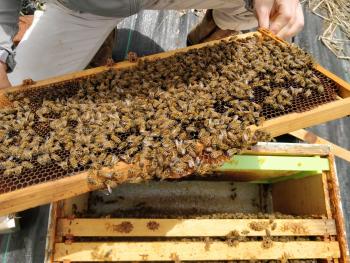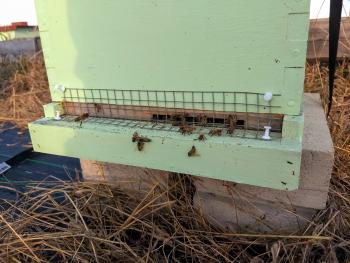Resources for Veterinarians
Honey Bee Inspection Resources for Veterinarians
Produced by University of Massachusetts, funded by USDA Specialty Crop Block Grant Program 2019 AM190100XXXXG044 through the Massachusetts Department of Agricultural Resources (MDAR), in collaboration with the Massachusetts Department of Agricultural Resources, and the Cummings School of Veterinary Medicine at Tufts University. Learn learn more about the Bee-Vet project..
Learn how to inspect honey bee hives:
View instructional videos explaining how to inspect a hive and collect disease samples:
- Introduction
- Equipment
- Conducting a Basic Inspection
- Identifying Abnormal Brood
- Collecting a Brood Sample
- Collecting an Adult Bee Sample
Find resources, protocols, and forms for conducting a hive inspection:
Recommended resources and classes about honey bee disease and management:
- Recommended Beekeeping Resources
- Recommended Honey Bee Courses
- Textbook: Honey Bee Medicine for the Veterinary Practitioner
- Fact Sheets/Guides:
Recommended resources for apiary design:
BONUS: Check out this 2021 article about honey bee health and the need for collaboration between apiarists and veterinarians, written by several Northeast bee inspectors including our very own Massachusetts Chief Apiary inspector Kim Skyrm!
For national resources, check out the Honey Bee Veterinary Consortium
Are you a beekeeper looking for a vet? Or a vet trying to connect with beekeepers? Check out the HBVC's national directory of bee vets.


